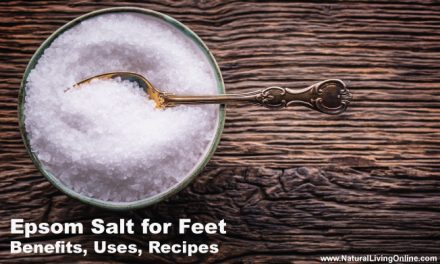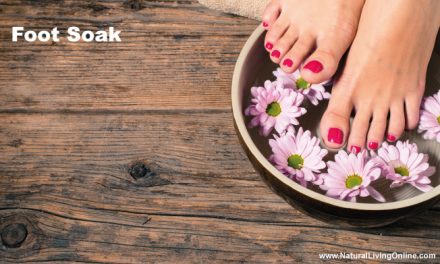Athlete’s foot is a common fungal infection that affects the skin on the feet. The condition is also known as tinea pedis. It is a form of ringworm, which is a fungal infection that can affect the skin on any part of the body. It causes the skin to become itchy, red, and cracked. The fungus that causes athlete’s foot is called Trichophyton. It is a type of mold that is found in warm, moist places, such as locker rooms, public showers, and swimming pools. The fungus can also be found on contaminated clothing, towels, and floors.
Athlete’s foot is a very common condition, affecting about 70% of people at some point in their lives. It can affect anyone, but it is more common in people who wear tight-fitting shoes for long hours and who sweat a lot, such as athletes or construction workers. It is also more common in men than in women.
What does Athlete’s foot look like
Athlete’s foot usually starts between the toes. It can cause the skin on your feet to become red, cracked, and blistered. You may also see white patches on your skin or feel a burning sensation. The fungus can also spread to the soles of the feet and to the toenails if not treated.
Types
Four Types of Athlete’s Foot Infections
| Athlete’s Foot Type | Description |
|---|---|
| Toe-Web | Most common The skin may crack, peel, flake, or change color Usually affects the skin between the ring and pinky toe |
| Moccasin | Affects the bottoms of feet, heels, and outer edges Skin on bottoms and edges thicken and crack Toenails get infected in rare cases |
| Vesicular | It affects the bottom of feet The skin has bumps or fluid-filled blisters |
| Ulcerative | The rarest type of athlete’s foot It appears between the toes Open sores appear at the bottom of feet |
Symptoms
The most common symptom of athlete’s foot is a burning sensation on the skin. Other symptoms may include redness, itching, and cracking of the skin. If the condition is severe, you may also see blisters or ulcers on the skin.
Causes
Athlete’s foot is caused by a fungus called Trichophyton. This type of fungus is found in warm, moist places, such as locker rooms, public showers, and swimming pools. The fungus can also be found on contaminated clothing, towels, and floors.
You can get athlete’s foot by
- Walking barefoot in a public place, such as a locker room or public shower
- Sharing contaminated clothing, towels, or shoes with someone who has athlete’s foot
- Excessive sweating
- If you are diabetic
- Wearing enclosed footwear for long periods
- Keeping your feet wet for long
Risks
Athlete’s foot is a contagious condition. The fungus that causes the infection can spread easily through contact with contaminated surfaces, such as locker room floors or public showers. The fungus can also spread to other parts of your body, such as your toenails, if not treated.
If athlete’s foot is left untreated, the infection can spread to other parts of your body, such as your toenails, hands or groin. The infection can also spread to other people if you do not practice good hygiene. untreated athlete’s foot can also lead to other problems, such as cellulitis, a serious bacterial infection of the skin.
Diagnosis and Tests
Athlete’s foot is usually diagnosed based on the symptoms. Your doctor may also do a physical examination of your feet. In some cases, your doctor may take a skin sample to test for the presence of the fungus that causes athlete’s foot.
Your doctor may take a skin sample to test for the presence of the fungus that causes athlete’s foot. This test is called a skin culture. In some cases, your doctor may also do a blood test to look for the presence of the fungus.
Treatment
Athlete’s foot is usually treated with antifungal medication. This medication can be in the form of a cream, lotion, powder, or spray. You will need to apply the medication to the affected area for a period of time. In some cases, you may also need to take antifungal pills.
Home remedies for athlete’s foot
There are several home remedies that you can try to treat athlete’s foot. Here are some proven home remedies:
Tea Tree Oil
Tea tree oil has antifungal properties that can help to treat athlete’s foot. To use tea tree oil, mix a few drops of the oil with a carrier oil like olive oil. Apply the mixture to the affected area and leave it on for 30 minutes. Wash the area with soap and water.
Neem Oil
Neem oil also has antifungal properties that can help to treat athlete’s foot. It has been used for centuries to treat various skin conditions. Apply a few drops of neem oil on the affected area two to three times a day. You can also add a few drops of neem oil to your bath water and soak in it for about 20 minutes.
Garlic
Garlic also has antifungal properties that can help to treat athlete’s foot. To use garlic, crush a few cloves of garlic and mix it with a carrier oil like olive oil. Apply the mixture to the affected area and leave it on for 30 minutes. Wash the area with soap and water.
Hydrogen Peroxide
Hydrogen peroxide can help to treat athlete’s foot by killing the fungus that causes the infection. To use hydrogen peroxide, mix a 3% solution of hydrogen peroxide with water. Soak the affected foot in the solution for 30 minutes. After 30 minutes, dry the foot thoroughly.
Baking Soda
Baking soda can help to treat athlete’s foot by absorbing moisture and keeping the feet dry. To use baking soda, mix a cup of baking soda with warm water. Soak the affected foot in the solution for 30 minutes. After 30 minutes, dry the foot thoroughly.
Vinegar
To make the vinegar and water solution, mix equal parts of vinegar and water. Soak the affected foot in the solution for 30 minutes. After 30 minutes, dry the foot thoroughly.
Salt Foot Soak
A salt foot soak can help to treat athlete’s foot by killing the fungus that causes the infection. To make a salt foot soak, mix a cup of sea salt or Himalayan pink salt with warm water. Soak the affected foot in the solution for 30 minutes. After 30 minutes, dry the foot thoroughly.
Keeping feet dry and clean
One of the most important things you can do to prevent athlete’s foot is to keep your feet clean and dry. Wash your feet every day with soap and water. Dry your feet thoroughly, especially between the toes. Wear socks that absorb moisture and keep your feet dry. Change your socks every day. If your feet are sweaty, change your socks more often. Wear shoes that are made of breathable material like leather or canvas. Avoid wearing tight shoes that don’t allow your feet to breathe. You may also use talcum powder or foot powder to keep your feet dry.
Over-the-counter (OTC) treatments for athlete’s foot
Yes, there are a number of OTC treatments for athlete’s foot. These include antifungal creams, lotions, powders, and sprays.
Prevention
There are several things you can do to prevent athlete’s foot. These things include:
• Wearing socks made of cotton or wool.
• Wearing sandals or open-toed shoes.
• Avoiding walking barefoot in public places.
• Washing your feet regularly with soap and water.
• Drying your feet completely after you shower or bathe.
• Changing your socks daily.
• Avoiding sharing contaminated clothing, towels, or shoes with others.
Athlete’s foot is a contagious condition that can be easily spread through contact with contaminated surfaces, such as locker room floors or public showers. You can also get the infection by sharing contaminated clothing, towels, or shoes with someone who has athlete’s foot. The best way to prevent athlete’s foot is to practice good hygiene and to avoid coming into contact with the fungus that causes the infection.
Frequently Asked Questions
Is in an indication of low immunity?
Athlete’s foot is not an indication of low immunity. However, people with weakened immune systems are more likely to develop complications from athlete’s foot, such as cellulitis (a bacterial skin infection).
How does athlete’s foot affect my body?
Athlete’s foot is caused by a fungus that thrives in warm, moist environments. The fungus can spread easily through contact with contaminated surfaces, such as locker room floors or public showers. Once the fungus enters your body, it can cause an infection. Athlete’s foot can spread to other parts of your body, such as your toenails, if not treated. The infection can also spread to other people if you do not practice good hygiene.
Can athlete’s foot go away overtime on its own?
Athlete’s foot is a contagious condition that can be easily spread through contact with contaminated surfaces, such as locker room floors or public showers. You can also get the infection by sharing contaminated clothing, towels, or shoes with someone who has athlete’s foot. The best way to prevent athlete’s foot is to practice good hygiene and to avoid coming into contact with the fungus that causes the infection.
What is the best cure for athlete’s foot?
Athlete’s foot is usually treated with antifungal medication. This medication can be in the form of a cream, lotion, powder, or spray. You will need to apply the medication to the affected area for a period of time. In some cases, you may also need to take antifungal pills.
What shall I do if I have athlete’s foot symptoms?
There are several things you can do to manage your athlete’s foot symptoms. These things include:
• Soaking the affected foot in a vinegar and water solution.
• Applying tea tree oil to the affected area.
• Wearing socks made of cotton or wool.
• Wearing sandals or open-toed shoes.
How long does it take to get better?
You should start to see improvement in your symptoms within a few days of starting treatment. However, it is important to continue the treatment for the recommended amount of time to make sure the infection is completely gone. If you stop treatment too early, the infection could come back.
When should I see a doctor?
You should see your healthcare provider if you have any of the following:
• Red, swollen, or painful skin on your foot.
• Blisters or sores on your foot.
• Cracking or peeling skin on your foot.
• A foul-smelling discharge from your foot.
• Fever, chills, or body aches.
Your doctor will examine your foot and may order a test to confirm the diagnosis. Treatment for athlete’s foot usually includes antifungal medication. In some cases, you may also need to take antifungal pills.
What questions should I ask my dermatologist about athlete’s foot?
• What is the most likely cause of my infection?
• What precautions shall I take with myself and others around me?
• What tests do I need to confirm the diagnosis?
• How will this condition be treated?
• Are there any home remedies or over-the-counter medications that can help relieve my symptoms?
• When can I expect my symptoms to improve?
• How long will I need to take medication?
• Are there any possible side effects of the medication?
• What can I do to prevent this condition from coming back?
• Should I see a specialist for further evaluation and treatment?
• What follow-up appointments do I need?
Sources:
- Antifungal activity of different neem leaf extracts and the nimonol against some important human pathogens
- Treatment of interdigital tinea pedis with 25% and 50% tea tree oil solution: a randomized, placebo-controlled, blinded study
- Co-operative inhibitory effects of hydrogen peroxide and iodine against bacterial and yeast species
- Sodium Chloride Inhibits the Growth and Infective Capacity of the Amphibian Chytrid Fungus and Increases Host Survival Rates
- Efficacy of ajoene, an organosulphur derived from garlic, in the short-term therapy of tinea pedis
This website does not provide medical advice.
All information provided on this website, and on associated social media networks, including but not limited to texts, images, and numbers are for general information purpose only. It is not intended as medical advice and it does not include all possible precautions, side effects, or interactions that may occur. Neither NaturalLivingOnline.com nor its author/founder take responsibility for how you use this information. Statements contained on NaturalLivingOnline.com have not been evaluated by the FDA. You should conduct thorough research via multiple sources and consult your physician or qualified doctor before using any essential oil or herbal remedy. Information on NaturalLivingOnline.com must not be relied upon for medical, legal, financial or other decisions.













